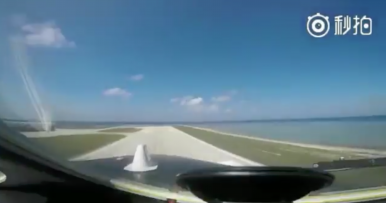DEALING WITH RIGOROUS PRO CHINA FOLKS
Wow! Thank you venerable Rigoberto Tiglao for grouping citizen Golez with Vice President Robredo and Acting Chief Justice Carpio. An honor!!!
Except Rigoberto showed lack of rigor 😂😂😂when he displayed blissful ignorance by saying I don't know the geography of Woody Island and the rest of the Paracels.
THE STRATEGIC TRIANGLE: FYI, Woody Island has been and continues to be a vital part of my regular, numerous talks on the South China Sea/West Philippine Sea in my presentations in think tanks in Japan, Hanoi and here in the Philippines as well as in the National Defense College of the Philippines, Maritime Forum, Philippine Merchant Marine Academy Graduate School, Philippine Navy, PNP, Rotary Clubs, etc., and numerous TV and radio interviews.
In my lectures, I often discuss your China's goal of establishing a Strategic Triangle in the South China Sea, using the photo inserted here, consisting of military bases in Woody Island, the northern point of the Triangle, Spratlys (Fiery Cross, Mischief, etc), the western point and Scarborough Shoal, the eastern point. I present a PowerPoint diagram of that Strategic Triangle showing that Woody Island is around 900 kilometers north of the Spratlys and 650 kilometers from Scarborough Shoal. I have been giving this Strategic Triangle lecture since 2015 ever since that concept was discussed in an international Strategic Conference in Tokyo. Many of these lectures and TV, radio interviews are accessible on YouTube, FB and live video.
In fact as early as 1970-1971, while you were helping the Central Committee of the Communist Party of the Philippines plot how to topple our democracy, I got to visit the Spratlys several times as part of secret Navy missions to transport troops, supplies and equipment to our islands there. We studied very throughly the geography of the area and I was one of those in charge of navigating through the tricky shoals and reefs.
What about you the venerable Tiglao? When was the last time you gave a lecture on the South China Sea and Woody Island? What kind of audience did you have, if any?
On the threat of your China bomber, I mentioned that in my lecture last Thursday at the National Defense College of the Philippines. I said it's a grave threat because the nuclear capable bomber’s combat radius covers the entire Philippines and that it carries even a long range cruise missile, the CJ-10A, which has a range of 1,500-2000 kilometers. The CJ-10A may be nuclear tipped. Given the bomber's combat radius of around 3,500 kilometers, the possible reach of that cruise missile is awesome. I also said that I believe China’s next move is to deploy combat planes on Mischief Reef inside our EEZ, Fiery Cross Reef and Subi Reef. In geo-security, to be within the killing zone of a weapon that can deliver a nuclear payload is very serious. Especially if the power deploying that weapon is claiming and grabbing 90% of our West Philippine Sea. The mere presence of such weapon systems is very coercive.
Of course China's H-6K bomber is exhilarating to those who support and defend China’s claims and want China to win and take over the Philippines.
http://www.manilatimes.net/carpio-robredo-and-golez-make-a-fool-of-themselves-over-chinese-bomber-issue/401599/



